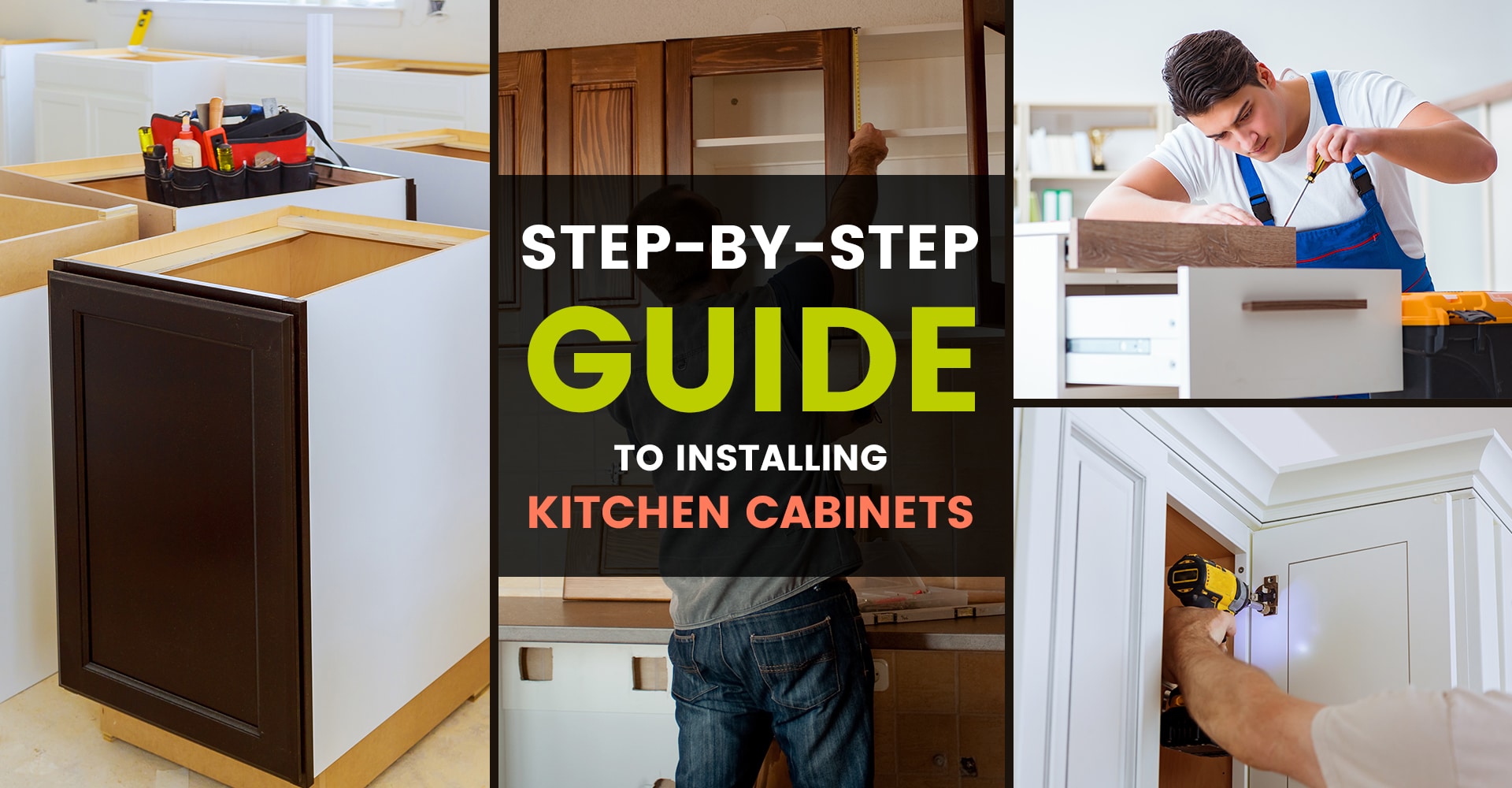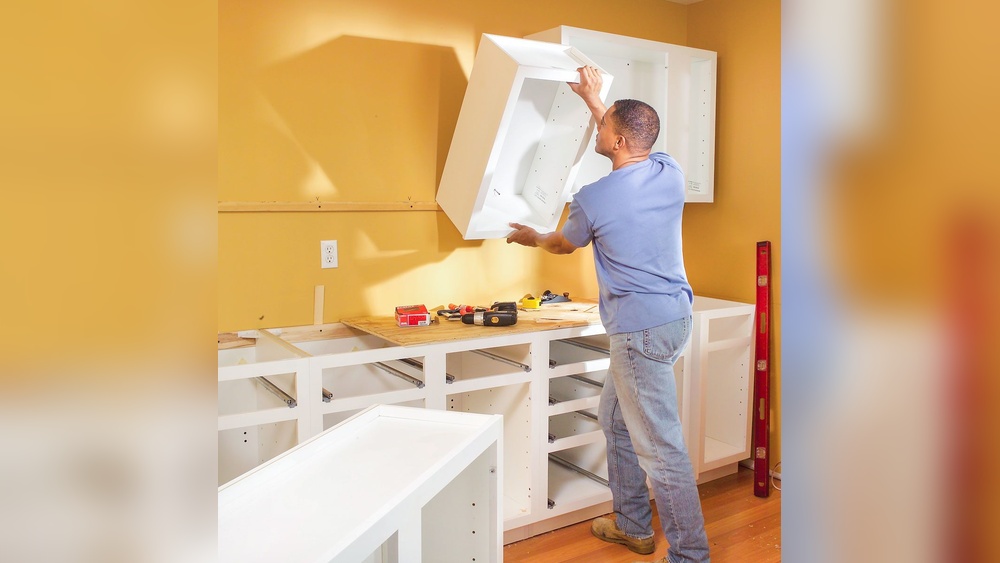Thinking about upgrading your kitchen by installing new cabinets? You might feel a bit overwhelmed, but with the right guidance, you can tackle this project yourself and save money.
Installing kitchen cabinets isn’t just about attaching boxes to your walls—it’s about creating a sturdy, level, and beautiful foundation for your entire kitchen. You’ll learn how to find the studs that hold everything up, make sure your cabinets are perfectly level, and handle those heavy pieces safely.
By the end of this article, you’ll have clear, step-by-step instructions that make this project doable—even if you’re a beginner. Ready to transform your kitchen and gain a skill that lasts? Let’s get started!
Tools And Materials
Essential tools include a drill, level, stud finder, tape measure, and screwdriver. A pencil helps mark cabinet positions precisely. A pry bar and hammer may be needed to remove old cabinets.
Required materials consist of wall cabinets, base cabinets, screws, shims, and wood glue. Use construction adhesive for extra hold. Cabinet mounting brackets help secure the cabinets safely to the wall.
| Tools | Materials |
|---|---|
| Drill | Wall Cabinets |
| Level | Base Cabinets |
| Stud Finder | Screws |
| Tape Measure | Shims |
| Screwdriver | Wood Glue |
| Pencil | Construction Adhesive |
| Pry Bar & Hammer | Mounting Brackets |
Preparation Steps
Start by clearing the space where cabinets will go. Remove all items from countertops and floors. This creates a safe work area.
Next, turn off utilities like water and electricity. This prevents accidents and damage during removal and installation.
Finally, carefully remove old cabinets. Use a screwdriver to take out screws. Pull cabinets away from the wall slowly to avoid damage.
Locating Wall Studs
Use a stud finder to locate wall studs for cabinet support. Move the device slowly across the wall. It beeps or lights up when it finds a stud. Mark each stud location with a pencil. Usually, studs are 16 or 24 inches apart.
Marking stud positions helps secure cabinets firmly. Use a level to draw a horizontal line where cabinets will hang. This ensures cabinets stay straight and balanced. Double-check marks before drilling or screwing.
Installing A Ledger Board
The ledger board holds the weight of the cabinets during installation. It is fixed to the wall at the height where the bottom of the upper cabinets will sit. This board keeps the cabinets level and secure while attaching them to the wall studs.
To attach the ledger board, first measure and mark the correct height on the wall. Use a level to make sure the board is perfectly horizontal. Then, screw the board firmly into the wall studs using long screws. This creates a strong support for the cabinets.
Starting With Corner Cabinets
Start by placing the corner cabinet tightly against the wall studs. Use a stud finder to locate studs behind drywall. This ensures the cabinet is securely fastened. Check the cabinet’s position carefully to avoid gaps or misalignment.
Use a level to make sure the cabinet is perfectly horizontal. A plumb bob or level helps verify the cabinet is vertical. Adjust with shims under the cabinet base or behind the sides to fix any unevenness.
Fasten the cabinet to the wall through the studs using strong screws. Double-check that the cabinet stays level and plumb during screwing. Tighten screws slowly to avoid shifting the cabinet out of position.

Mounting Base Cabinets
Start by aligning base cabinets along the wall. Use a level to make sure they sit straight and even. Place shims under cabinets if the floor is uneven. This keeps cabinets stable and balanced.
Next, find wall studs with a stud finder. Secure cabinets by driving screws into these solid studs. This ensures the cabinets stay firmly attached and can hold weight safely.
To connect adjacent cabinets, clamp them together tightly. Drive screws through the cabinet sides to join them. This creates a seamless and strong connection between each cabinet.
Installing Wall Cabinets
Start by removing the doors and shelves from the wall cabinets. This makes the cabinets lighter and easier to handle. Keep all screws and parts in a safe place for later use.
Use a helper or a cabinet lifting tool for lifting and supporting the cabinets. Hold the cabinet firmly to avoid dropping or damaging it. Place a level underneath to keep the cabinet straight.
Secure the cabinet by attaching screws through the back into wall studs. Use a drill and make sure screws are tight. Check the cabinet position with a level before fully tightening the screws.

Leveling And Adjustments
Check each cabinet for level and plumb using a spirit level. This ensures cabinets stand straight and doors close properly. Use a level on both the front and sides of the cabinets.
Place shims in any gaps between the cabinet and the wall or floor. Shims help fix uneven surfaces and keep cabinets steady. Tap them gently until the cabinet fits snugly.
Adjust cabinet doors by tightening or loosening the hinge screws. This moves doors up, down, left, or right. Make sure doors align evenly and open smoothly.
Finishing Touches
Reattaching doors and hardware requires care and patience. First, align each door with its frame. Use screws to attach hinges tightly but gently. Check that doors open and close smoothly. Adjust screws if doors seem crooked or hard to move. Attach knobs or handles by screwing them into pre-drilled holes. Ensure all hardware is secure to avoid future problems.
Installing trim and molding gives cabinets a neat finish. Measure the length needed for each piece carefully. Cut trim with a saw at the right angles. Use finishing nails or adhesive to fix trim pieces in place. Fill any gaps or holes with wood filler. Sand and paint or stain trim to match cabinets. This step hides gaps and adds a polished look.
Common Challenges
Uneven walls and floors make cabinet installation tricky. Cabinets may not fit flush. Use shims to adjust gaps and keep cabinets level. Check with a level tool often.
Heavy cabinet handling requires care and strength. Always ask for help to avoid injury or damage. Lift with your legs, not your back. Use clamps to hold cabinets in place while securing.
Ensuring secure mounting is very important. Use strong screws that go into wall studs for better support. Avoid just screwing into drywall. Double-check stability before finishing installation.

Frequently Asked Questions
How To Install Kitchen Cabinets For Beginners Step By Step?
Start by locating and marking wall studs. Attach a temporary ledger board for support. Remove cabinet doors and shelves. Mount the base corner cabinet first, ensuring it is level. Secure cabinets to studs with screws. Connect adjacent cabinets tightly, then install upper cabinets using the ledger board.
Is It Easy To Install Your Own Kitchen Cabinets?
Installing your own kitchen cabinets is doable with patience and the right tools. Secure cabinets to studs, ensure level alignment, and consider help for heavy lifting. Starting with corner cabinets and removing doors simplifies the process. Confidence and careful planning make DIY cabinet installation easier.
Do Cabinets Need To Be Screwed Into Studs?
Yes, cabinets must be screwed into studs for secure and stable installation. Screwing into studs prevents cabinets from falling or sagging under weight. Use a stud finder to locate studs before mounting. Avoid attaching cabinets only to drywall, as it won’t support heavy loads.
How Much Does It Cost Per Foot To Install Kitchen Cabinets?
The cost to install kitchen cabinets ranges from $100 to $300 per linear foot. Prices vary by cabinet type, materials, and labor complexity.
Conclusion
Installing kitchen cabinets takes time, patience, and careful measuring. Start with the base cabinets and work upwards. Use a level to keep everything straight and secure cabinets to wall studs. Take your time and check alignment often. Removing doors and shelves makes handling easier.
With each step, your kitchen begins to take shape. Keep safety in mind and ask for help when lifting heavy pieces. The result will be a functional, beautiful kitchen you built yourself. Enjoy the satisfaction of a job well done.

Yes, working as , Food Blogger and Product Reviewer for last 6 years. Here you will get amazing deals for Smart kitchen products. I am your best source for the latest update in cooking trends. I provide insightful articles, reviews, and analysis on cutting-edge kitchen gadget. My mission is to empower readers with the knowledge they need to stay ahead in a rapidly evolving coking world. Join me as we explore the future of food technology and how it shapes our lives today and tomorrow.





